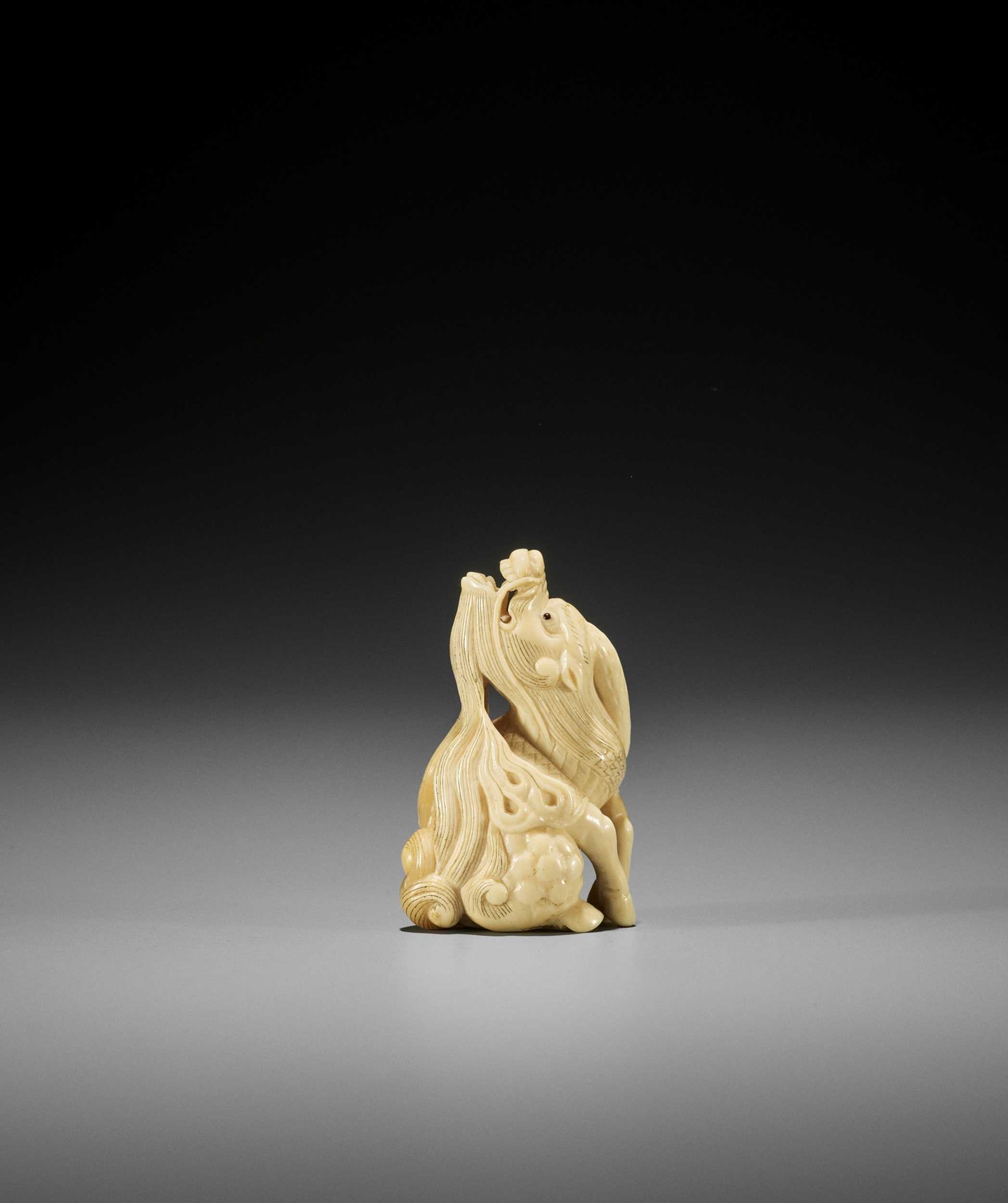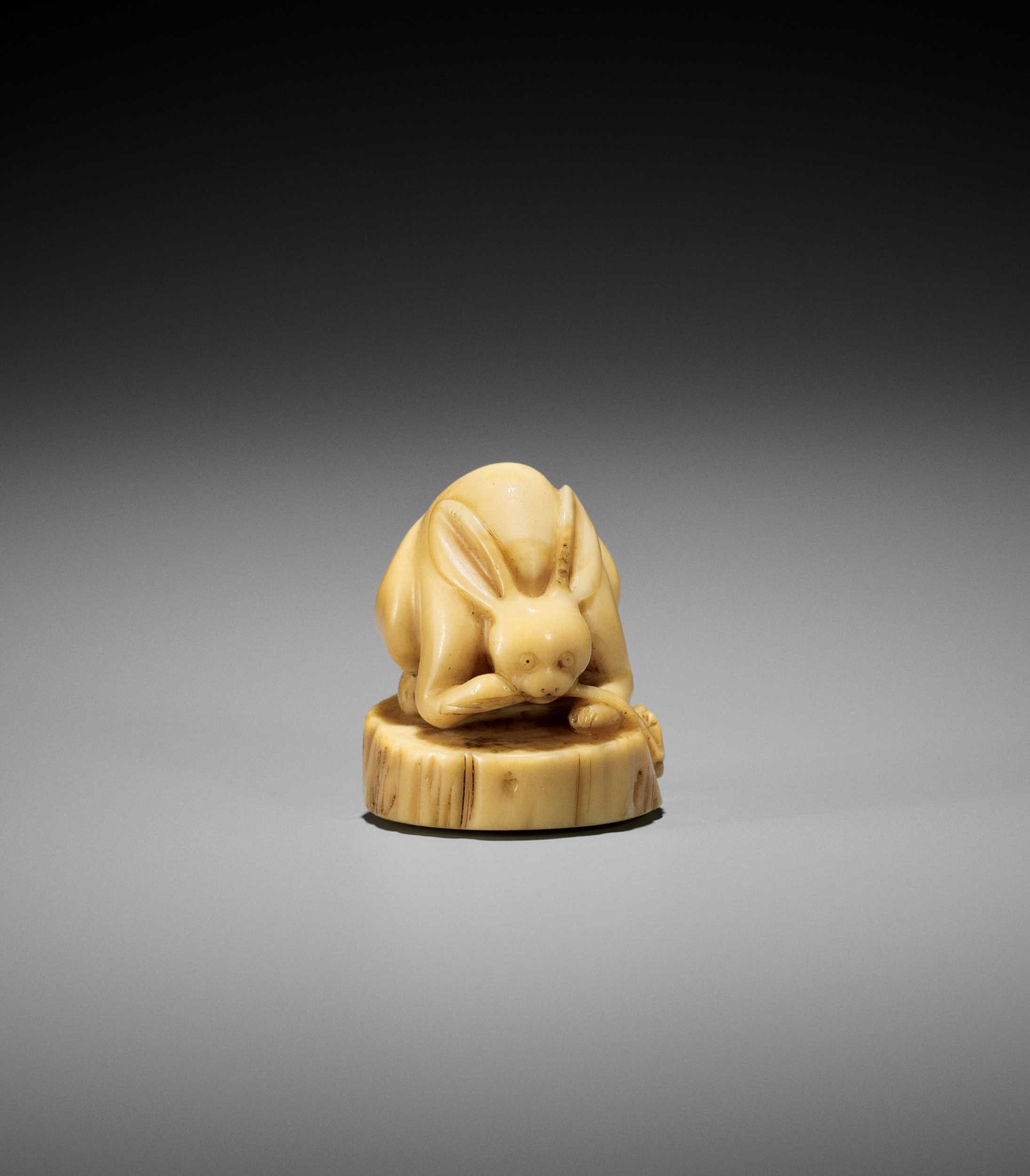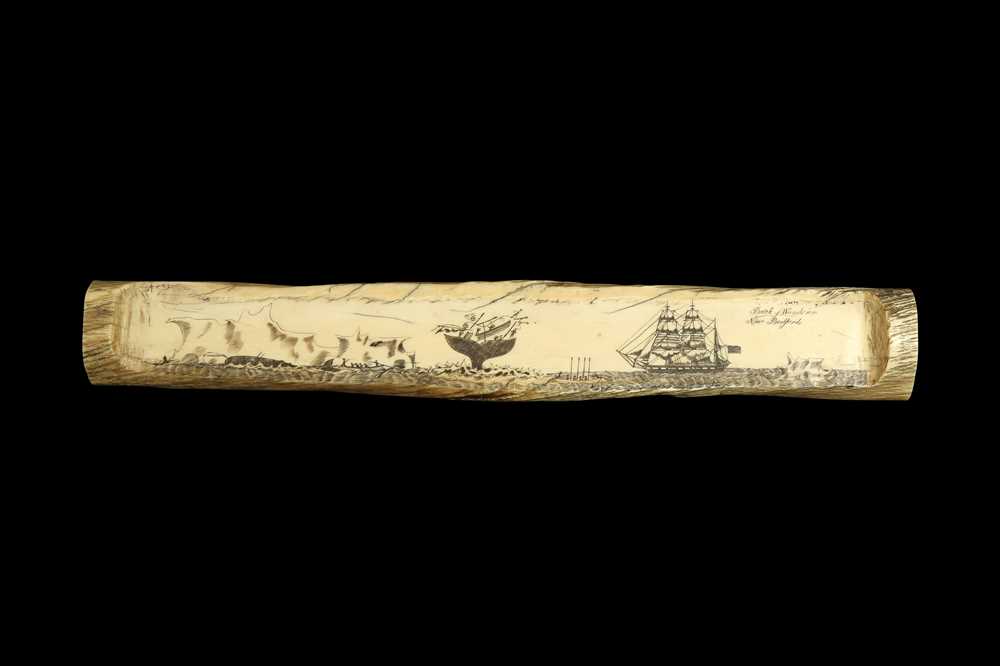Monodon monoceros, Arctic Circle, Canada The Narwhal, a marine mammal, is a majestic creature which is widely unknown. A species of whale (a cetacean) still living today in the Arctic Ocean it is most closely related to the Beluga (also in the Mondontidae family) and Irrawaddy Dolphin. The name "Narwhal" is derived from the Old Norse word náhvalr, meaning "corpse man"-probably a reference to the mottled white and gray skin coloring of the adult-or perhaps a reference to the way a narwhal can lie belly up in the waves, completely motionless, for several minutes at a time. Male Narwhals are easily identified by their single extraordinarily long spiraling tusk, which is actually a tooth that projects from the left side of the upper jaw and forms a left-handed helix. While the body of an adult male can grow up to lengths of 18 feet, the tusk can grow to lengths of 5 to 10 ft. Only one in 500 males have two tusks, which occurs when the right tooth, normally small, also grows out. Like the tusks of elephants, narwhal tusks do not regenerate if they break off. However, unlike elephant tusks (or mammoth or walrus), which have a grain or core, the Narwhal's tusks have a small hollow that runs nearly the full length. The purpose of the tusk has been the subject of much speculation. Early scientific theories postulated that the tusk was used to pierce the ice; others suggested that it was used for male showmanship and domination, a theory is supported by the activity of "tusking" in which two males rub their tusks together. However, newer research by the Smithsonian suggests that the tusk may, in fact, be a sensory organ aiding in the detection of temperature, salinity and pressure of the water in the Narwhal's habitat. There appear to be millions of tiny, deep tubules extending from the tusk's surface connecting to the narwhal's nervous system, a fact which supports this theory. This ivory tusk has been attributed with the creation of the mythical unicorn legends of Medieval Europe. Some believed that Noah threw the unicorn off the ark and it evolved into the narwhal. So prized did the fabled horn of the unicorn become that Queen Elizabeth paid an incredible £10,000 for one-comparable to the cost of an entire castle. The royal scepter in England is made from the rare Narwhal tooth, perhaps the one that Queen Elizabeth purchased in the 16th century. Northern traders in Europe sold them for more than their weight in gold for their supposed magical properties. The horns were used to make cups that were thought to negate any poison that may have been slipped into the drink. Between the 15th and 17th centuries, during the Age of Exploration, the truth regarding the tusk's origin developed gradually as explorers and naturalists began to visit Arctic regions contributing to the public's understand of the creature. In 1555, Olaus Magnus a Swedish writer and mapmaker, published a drawing of a fish-like creature with a horn on its forehead in his Carta Marina, a map of the Northern Seas depicting native sea creatures. In 1577, Martin Frobisher, an English seaman, depicted the horned whale in his writings. Finally, in 1638, Danish zoologist Ole Wurm gave a public lecture on narwhal's tusks, which put a definitive end to the legend. Aerial surveys suggest a population of around 40,000 to 50,000 Narwhals remaining. Their main natural predators are polar bears and orcas. Inuits are permitted to hunt this whale species legally, however, Narwhals have been a protected species since 1972 and their importation is prohibited. Length 82in. Circumference of tusk at base: 9 ½ in
Monodon monoceros, Arctic Circle, Canada The Narwhal, a marine mammal, is a majestic creature which is widely unknown. A species of whale (a cetacean) still living today in the Arctic Ocean it is most closely related to the Beluga (also in the Mondontidae family) and Irrawaddy Dolphin. The name "Narwhal" is derived from the Old Norse word náhvalr, meaning "corpse man"-probably a reference to the mottled white and gray skin coloring of the adult-or perhaps a reference to the way a narwhal can lie belly up in the waves, completely motionless, for several minutes at a time. Male Narwhals are easily identified by their single extraordinarily long spiraling tusk, which is actually a tooth that projects from the left side of the upper jaw and forms a left-handed helix. While the body of an adult male can grow up to lengths of 18 feet, the tusk can grow to lengths of 5 to 10 ft. Only one in 500 males have two tusks, which occurs when the right tooth, normally small, also grows out. Like the tusks of elephants, narwhal tusks do not regenerate if they break off. However, unlike elephant tusks (or mammoth or walrus), which have a grain or core, the Narwhal's tusks have a small hollow that runs nearly the full length. The purpose of the tusk has been the subject of much speculation. Early scientific theories postulated that the tusk was used to pierce the ice; others suggested that it was used for male showmanship and domination, a theory is supported by the activity of "tusking" in which two males rub their tusks together. However, newer research by the Smithsonian suggests that the tusk may, in fact, be a sensory organ aiding in the detection of temperature, salinity and pressure of the water in the Narwhal's habitat. There appear to be millions of tiny, deep tubules extending from the tusk's surface connecting to the narwhal's nervous system, a fact which supports this theory. This ivory tusk has been attributed with the creation of the mythical unicorn legends of Medieval Europe. Some believed that Noah threw the unicorn off the ark and it evolved into the narwhal. So prized did the fabled horn of the unicorn become that Queen Elizabeth paid an incredible £10,000 for one-comparable to the cost of an entire castle. The royal scepter in England is made from the rare Narwhal tooth, perhaps the one that Queen Elizabeth purchased in the 16th century. Northern traders in Europe sold them for more than their weight in gold for their supposed magical properties. The horns were used to make cups that were thought to negate any poison that may have been slipped into the drink. Between the 15th and 17th centuries, during the Age of Exploration, the truth regarding the tusk's origin developed gradually as explorers and naturalists began to visit Arctic regions contributing to the public's understand of the creature. In 1555, Olaus Magnus a Swedish writer and mapmaker, published a drawing of a fish-like creature with a horn on its forehead in his Carta Marina, a map of the Northern Seas depicting native sea creatures. In 1577, Martin Frobisher, an English seaman, depicted the horned whale in his writings. Finally, in 1638, Danish zoologist Ole Wurm gave a public lecture on narwhal's tusks, which put a definitive end to the legend. Aerial surveys suggest a population of around 40,000 to 50,000 Narwhals remaining. Their main natural predators are polar bears and orcas. Inuits are permitted to hunt this whale species legally, however, Narwhals have been a protected species since 1972 and their importation is prohibited. Length 82in. Circumference of tusk at base: 9 ½ in











Testen Sie LotSearch und seine Premium-Features 7 Tage - ohne Kosten!
Lassen Sie sich automatisch über neue Objekte in kommenden Auktionen benachrichtigen.
Suchauftrag anlegen